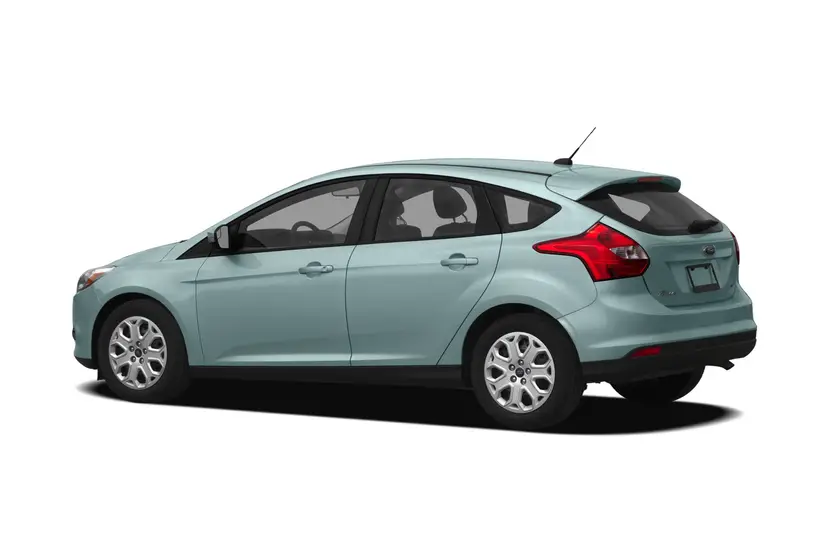
It is the motorized equivalent of a good pair of jeans — well sewn, good fit, comfortable, durable and affordable. That’s why Ford has sold more than 12 million Fiestas worldwide since 1976. It is the first car many people want to slip into when they have to go somewhere.
In Europe, Asia, South America and South Africa, that makes perfectly good sense. Many European and Asian streets are narrow. Parking space is at a premium. The Fiesta is a subcompact that moves well through narrow passages and fits easily into tight parking spaces. You feel confident driving it in congested environments.
I’ve been in Ford Fiesta subcompacts all over the world, even in Kazakhstan, where my Russian hosts ferried me around the little town of Balkash. They were well-educated but economically struggling people trying to make ends meet. Their tan late-1980s Fiesta served their purposes. “It works, and when it breaks, it’s easy to fix,” the husband of the household said.
Functional humility has value where the ability to function, simply to get from one place to another, can mean the difference between work or no work, food or hunger, fun or another day of life in a drab apartment complex. For millions of people worldwide, the little Fiesta has been that difference.
But that hasn’t been the case in the United States. The Fiesta was last sold here in 1980, rejected by consumers as too small and too cheaply made to compete.
Ford now believes that time and circumstance, combined with advances in small-car design and engineering, have changed that reality, and it is reintroducing the Fiesta to the domestic market. It’s a risky move, as indicated by empirical observations gathered from my Washington-Baltimore week in a “red candy metallic clear-coat” 2011 Ford Fiesta SE hatchback.
Here’s the deal:
In the late 1970s, when car companies worldwide were scurrying to respond to fuel shortages and rising fuel prices, Ford and General Motors responded by tapping their European subsidiaries for loss-leader versions of their subcompact automobiles. Ford of Europe contributed the Fiesta (and later the Escort). Opel, GM’s European subsidiary, gave us the Kadett.
Both cars were treated as throwaway products by Ford and GM dealers. Customers who bought them (me included, with the Opel Kadett) responded accordingly — buying them as low-cost, ultimately expendable wheels.
In the case of the Fiesta, it’s going to be a challenge to remove that experience from U.S. consumer memory. And it hardly matters, apparently, that the new Fiesta is far superior to the circa-1980 version.
The new Fiesta certainly is more aerodynamically designed and more attractive than its square-faced predecessors. The interior in the SE hatchback driven for this column is stoically simple in presentation. But it’s well-assembled, ergonomically sensible, and designed to handle iPods, iPads, laptops and practically all other electronic equipment available.
In the case of most subcompact economy cars, it’s oxymoronic to speak of performance and handling. But it’s okay to do so with the 2011 Fiesta. This car actually is “fun-to-drive.”
Steering is effortless, precise. The standard five-speed gearbox shifts smoothly. The 1.6-liter inline four-cylinder gasoline engine (119 horsepower, 109 foot-pounds of torque) won’t garner praise from racing enthusiasts. But it runs well enough for the city and, driven with common sense (right lane, middle lane — left lane only when needed), does nicely on the highway, too.
Overall fit and finish are excellent. Fuel economy is good, at 28 miles per gallon in the city and 37 on the highway. And the Fiesta runs well with regular gasoline. Thus, it seems that the new Fiesta should be a winner in a troubled U.S. economy aggravated by energy problems.
But a U.S. consumer reared on cheap gasoline and a bigger-is-better mentality remains a dangerous thing, even in a retail market whacked by the highest unemployment rate in decades and threatened by rising fuel prices.
Many people gave the Fiesta favorable nods during my drive week. But many others gave it the boot. “It’s too small,” the detractors said. Others called it a “girlie car.” And still others, with oil gushing into the Gulf of Mexico and gasoline prices inching upward, commented: “It doesn’t have enough power.”










































